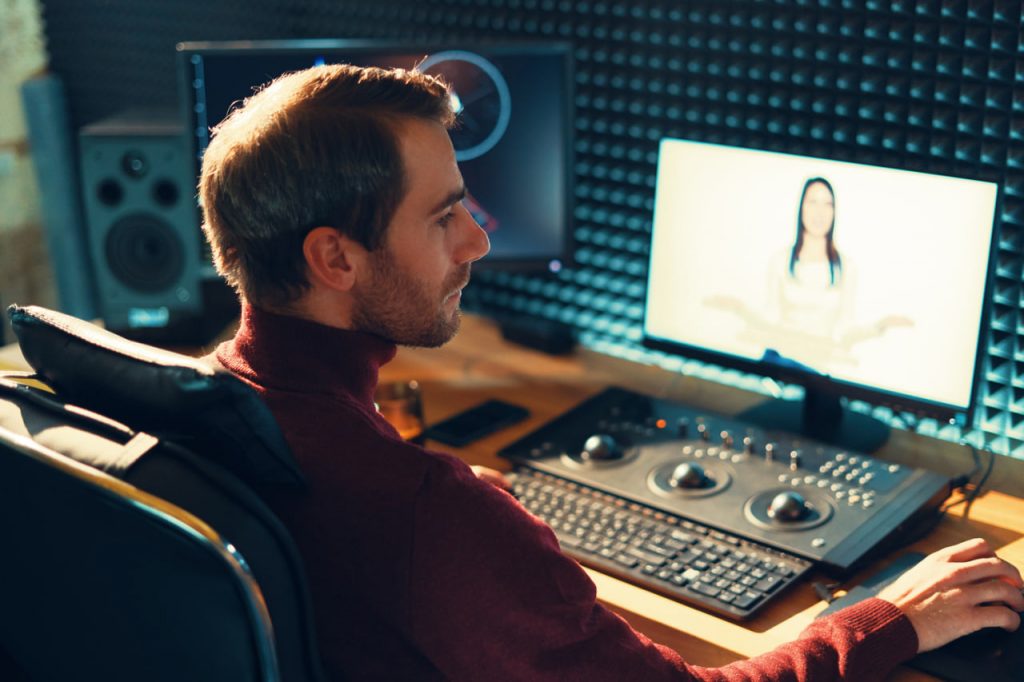A Day in the Life of a Professional Video Editor
Video editing might happen behind the scenes, but it’s at the heart of every polished piece of content you see — from YouTube videos and brand promos to documentaries and films. For those considering a career in editing, or simply curious about what it’s really like, here’s a detailed look at a typical day in the life of a professional video editor.
Morning: Organizing, Planning, and Communication
The day often starts with organization and planning. A video editor begins by checking emails and messages from clients, producers, or collaborators. There may be feedback from yesterday’s edit, updates on deadlines, or new projects coming in. If the editor works within a studio or agency, this might also involve a team meeting to align on goals and expectations.
Next, it’s all about reviewing footage. Whether it’s raw clips from a shoot, screen recordings, or animation elements, this part of the day is spent logging, labeling, and organizing files. Proper file management is essential. Editors create folders by project, categorize footage by scene or type, and double-check everything is backed up before diving into editing.
This is also when editors build or revise a project timeline, laying out how much can reasonably be accomplished during the day, especially when juggling multiple clients or projects at once.
Midday: Editing in Full Swing
With files organized and notes in hand, the core editing work begins. This can involve assembling a rough cut of a new video, revising an earlier version based on client feedback, or fine-tuning audio and visual elements. For a typical promotional video or vlog, this might mean trimming down long takes, adding transitions, syncing voiceover, and layering in music.
Editors work inside software like Adobe Premiere Pro, Final Cut Pro, or DaVinci Resolve, and will often switch between platforms depending on the project’s needs. This part of the day is highly focused and detail-oriented. Every second counts — literally — as editors trim clips to frame-accurate precision, balance colors, adjust levels, and experiment with pacing.
A lunch break might serve as a chance to refresh, but for many freelance editors working from home, it’s also a good time to review what’s been done with fresh eyes.
Afternoon: Fine-Tuning and Feedback
Once the main sequence is assembled, it’s time to polish. Editors refine transitions, stabilize shaky shots, reduce background noise, correct color tones, and enhance audio quality. Motion graphics and lower thirds may be added, and any on-screen text or subtitles are placed with care.
Collaboration often kicks in at this stage. The editor exports a draft (or several) and sends it to the client, producer, or team. While waiting for feedback, they may start work on another project or shift to lighter tasks like file backup or content planning.
Some editors might also use this time for professional development — watching tutorials, trying new effects, or exploring plugins that improve workflow. Staying updated is crucial in a fast-changing industry, especially with constant updates to editing software and emerging visual trends.
Evening: Final Touches and Delivery
With client feedback in, the evening might involve making final adjustments and rendering the project. Editors ensure everything aligns with brand guidelines, check audio mixdowns, and test the export in various formats for social platforms, web, or broadcast.
Delivery is often more than just sending a file. Editors write a quick summary or explanation, organize project folders for handoff, and sometimes upload directly to video platforms with proper titles, tags, and metadata.
The day ends with cleanup — organizing files, archiving footage, and preparing the project folder in case revisions are needed later. This stage helps maintain long-term efficiency and peace of mind.
The Creative Rhythm of an Editor
No two days are exactly the same. Some days are packed with new footage and creative decisions. Others are quieter, focused on revisions or admin. Deadlines can fluctuate, and unexpected changes are common. But whether working from a home studio, office, or co-working space, what stays consistent is the editor’s role as a storyteller. Every cut, fade, and frame choice helps bring an idea to life.
Video editing demands both artistic instinct and technical precision. It requires patience, an eye for rhythm, and a deep understanding of how images, sound, and story blend into one cohesive message. While the work is rarely glamorous, it’s incredibly rewarding to see a final product that resonates with an audience — knowing it came together, piece by piece, through your hands.
For those who thrive in creative challenges and love bringing visuals to life, life as a video editor offers a dynamic, fulfilling, and endlessly evolving career path.

